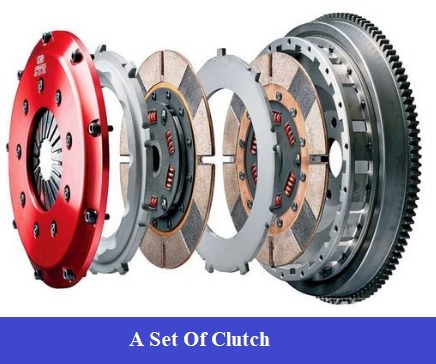A clutch is a mechanical device that is used to transfer torque from one shaft to another shaft.
Torque is produced by the engine of the vehicle when the initial speed is very low or starts to move.

A power transmission system is connected to the engine which defines how much torque is needed to run the vehicle at a specific speed. Clutch helps the power transmission to be smooth without any shock.
In other words, a clutch is a device that is used to engage and disengage the engine from the transmission system. It prevents any jerky motion or shocks and provides smooth motion.
Table of Contents
Parts Of Clutch:
- Flywheel
- Pilot Bearing
- Clutch plate or Disc plate
- Pressure plate
- Clutch cover
- Release levers
- Clutch shaft
Working Principle of Clutch:
When 2 revolving frictional surface comes in contact and is pressed, then they are united and starts to revolve at the same speed. Frictional force helps them to run at the same speed.
Frictional forces between these two surfaces depend on various factors such as surface area, the roughness of the surface, and applied pressure.
Flywheel is the driving member which is mounted on the engine while pressure plate is a driven member which is mounted on the transmission shaft.
Features of Clutch:
- It permits the engagement or disengagement of gear.
- The Clutch transmits the engine power to the wheel to avoid any jerk or shock.
- It gives ideal condition to vehicle driver while changing gears.
Types of Clutch:
- Friction Clutch
- Centrifugal Clutch
- Hydraulic Clutch
- Diaphragm Clutch
- Vacuum Clutch
- Electromagnetic clutch
Conclusion:
The Clutch is one of the most important parts of the engine in a vehicle. A clutch uses to transfer turning movement or torque from one shaft to another shaft when needed. The torque created by the motor at the initial speed is extremely low. Subsequently, it is difficult to start the engine under load.
